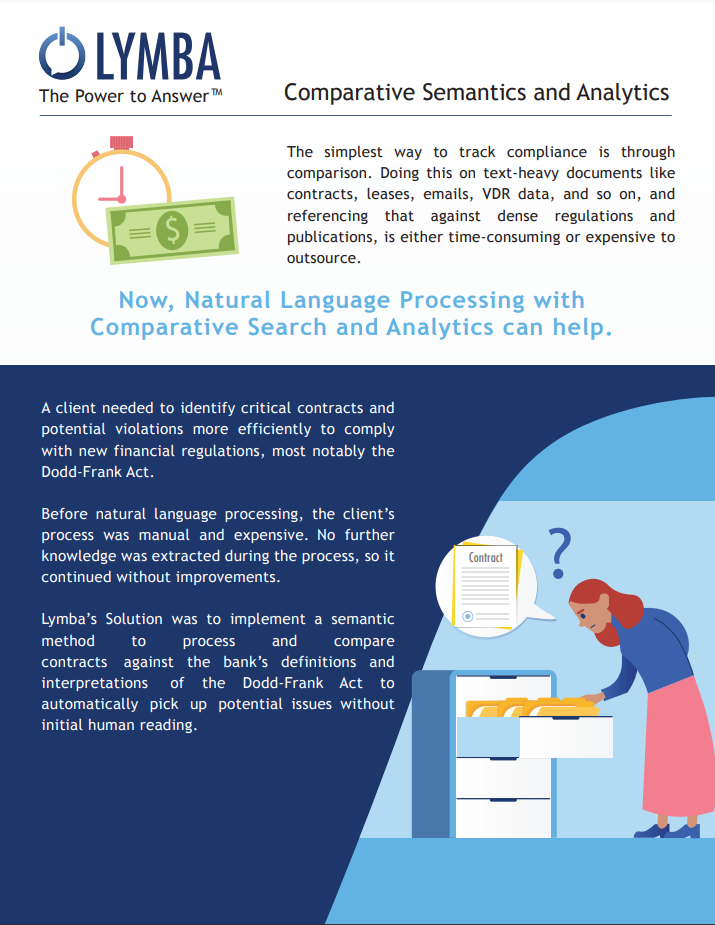Comparative Semantics and Analytics
PDF Transcript:
Comparative Semantics and Analytics
The simplest way to track compliance is through comparison. Doing this on text-heavy documents like contracts, leases, emails, VDR data, and so on, and referencing that against dense regulations and publications, is either time-consuming or expensive to outsource.
Now, Natural Language Processing with Comparative Search and Analytics can help.
A client needed to identify critical contracts and potential violations more efficiently to comply with new financial regulations, most notably the Dodd-Frank Act.
Before natural language processing, the client’s process was manual and expensive. No further knowledge was extracted during the process, so it continued without improvements.
Lymba’s Solution was to implement a semantic method to process and compare contracts against bank’s definitions and interpretations of the Dodd-Frank Act to automatically pick up potential issues without initial human reading.
We did this by training the system through:
Labelling of provision-relevant knowledge in sample snippets
Identification of provision paragraphs for training contracts
Creation of machine learning classification models
The contracts were pushed through the trained pipeline, and the client was provided a summarization of documents and any potential violations.
With a customized K-Extractor, the system can identify new names entity types, either by relabeling existing types of labeling new entity types.
The customized K-extractor can also identify relevant semantic relations with semantic calculus. This includes capturing the semantics of contract provisions, associating temporal constraints and penalties to contact clauses/attributes, binding clauses to one or both parties, and identifying exclusions.


